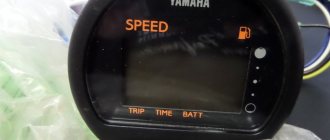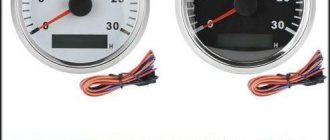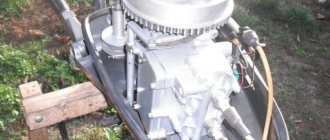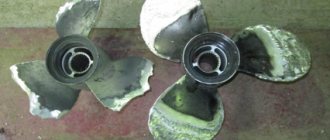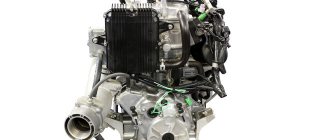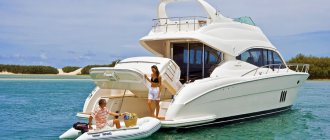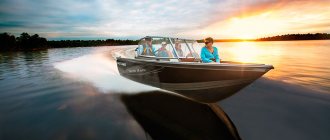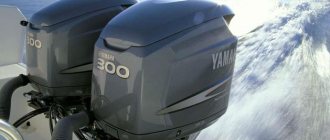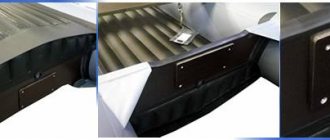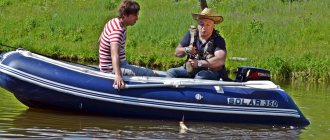The motor for a boat called a hybrid has been particularly popular for a long time and is in demand among motorists of various types. This boat unit is purchased by both owners of RIBs and motorists who own yachts, boats, catamarans or small boats.
Evgeniy Bronov
auto RU
Hybrid boat motor
For all these boaters, the hybrid motor becomes a reliable, practical and durable friend. In addition, one of the main properties of this outboard motor is that it is completely unpretentious in operation and you can save money on it, since its price is not too high.
From the world of outboard motors
Boat motors today are extremely reliable, practical and durable. Motorcycle technology is developing by leaps and bounds, and literally over the last 10-15 years, the outboard motor has acquired a lot of positive and modern features that distinguish it so favorably:
- Today, boat engines are extremely fast and powerful. Sometimes their power reaches 300 horsepower, which is an excellent indicator for the aquatic environment. This does not mean that there are no low- and medium-power engines - they also occupy a certain segment of the market today. However, if you want to get a powerful, durable motor that will help you make long trips, this is easy to arrange;
- Also, modern motors are extremely reliable, safe and durable. These factors are very important during their operation. In addition, today they produce the most environmentally friendly outboard motors. They cause virtually no damage to the environment - manufacturers take into account that today there are already enough hazardous industries. Although the exception is two-stroke outboard motors, which are even prohibited in some countries;
- The most modern models of outboard motors today are two-stroke and four-stroke outboard engines. They fully possess all the qualities described above. In addition, these units are very economical. This is amazing considering all their extra options and more power. However, after the first run-in and operation of these outboard motors, you will understand that they save fuel well.
We recommend reading: Popular brands of domestic outboard motors
HOMEMADE BOAT MOTORS (Continued - started in No. 5/2018)
After the next “remotorization” of the Nara PLM, which was described in detail in the previous part of the article, the well-proven, run-in 4-horsepower Champion G140VK engine was freed up and took its place in my closet. New ideas were needed to use it...
HYBRIDIZATION OF "ARROW"
The Internet community of DIYers has long come to the conclusion that the best “hybrids” are made using the “leg” of the old Soviet Strela engine. Indeed, as I could see, the Salyut deadwood is rather weak for a 4 hp engine. and more. And the one from “Veterok”, designed for power up to 15 hp, on the contrary, is too heavy for an internal combustion engine with a power of 4-7 hp. At the same time, “Strela” has a two-stroke single-cylinder engine with a power of 5 hp, operating at a low speed of 3700 rpm, that is, exactly the same as that of modern “lawn mower” engines. Accordingly, its gearbox and propeller should be ideal for the “hybrid”. And its weight of 24 kg also gives an advantage over the 26 kg “Veterok”.
PLM “Strela” is so ancient that many readers, I’m sure, have never even seen it. It was produced in three slightly different versions (ZIF-5, ZIF-5M and Strela) from 1953 to 1965 by two enterprises: the plant named after. Frunze (later KMPO named after Frunze) in Kuibyshev (Samara) and the Ulyanovsk Small Engine Plant, which later became part of the AvtoUAZ production association as the Ulyanovsk Motor Plant. This was the first Soviet mass-produced outboard motor. It was freely sold in all sporting goods stores, while the twice as powerful and technically advanced Moskva was in great short supply.
From its very first issue in 1963, the magazine “Boats and Yachts” never tired of scolding the Strela as an obsolete design that disgraced Soviet industry. And it’s true - “Arrow” was simple to the point of primitiveness. There was no water cooling pump (water to cool the cylinder was pumped directly by the propeller), a freewheel and reverse clutch, a hood (its function was performed by the gas tank covering the flywheel), and a gas pump (the fuel was supplied by gravity). Although a starter was provided, it was of such poor design that almost all owners threw it away. The cargo propeller ensured the boat's speed was no higher than 12-15 km/h. However, time has put everything in its place: thanks to its simplicity, supported by the strength of its parts, “Strela” turned out to be practically “indestructible”. For example, its propeller shaft (at 5 hp) has a diameter of 16 mm, while the 12-horsepower Moskva-12.5 and Veterka-12 have 12 and 14 mm, respectively. And so on in every detail. There is practically nothing to break in it! As a result, many working Strels have survived to this day and are not at all uncommon on the secondary market.
It was also not difficult for me to find a complete Strela at a reasonable price. The motor was purchased in Kashira and delivered to a nearby dacha. An attempt to launch it “as is” was unsuccessful, so it was condemned to be converted into a “hybrid”. Although during disassembly it turned out that the culprit of the failure was simply a clogged fuel tap...
I wanted to make not just another “hybrid”, namely the “Strela”, but with a new four-stroke motor head, that is, use a stylish 3.5-liter gas tank and, if possible, remove all the plastic from the “Chinese”.
I must say that the old Soviet engine is perfectly suited for such an operation. Its fuel valve and carburetor are located approximately in the same place as the Champion. Moreover, it turned out that the diameters of their flywheels are exactly the same. Perhaps the Arrow from 1953 and the Champion from 2014 share some very distant but common American ancestor with inch dimensions. Diagram of external and screw characteristics of “hybrid” outboard motors based on the Strela-5 PLM with four-stroke air-cooled engines.
The drawing shows the junction of the Strela stern tube with the Champion G140VK four-stroke motorhead. The adapter plate is made of duralumin in the traditional way for me, that is, without the use of turning and milling operations, using only a jigsaw with metal files and an electric drill with a set of drills and crowns. Therefore, it is prefabricated: a 5 mm sheet and a 12 mm thick plate are fastened with M6 screws. At the same time, I tried to avoid unnecessary weight.
The peculiarity of "Arrow" is that.
that its vertical shaft with a square shank of 11x11 mm fits directly into the corresponding square groove of the crankshaft. Therefore, in order to mate it with the Champion crankshaft, the latter had to be cut almost to the root. On the remaining part, a 12.7 × 12.7 mm (1/2 inch) square was ground with a grinder. The adapter coupling is a tool head “on 11”. To do this, the square shank of the Strela vertical shaft had to be converted to a hexagon. This is much more difficult than grinding square, but with a little practice on some kind of rod, it is quite possible. Of course, you only need to fit the hexagon onto the shaft “hot”, as I already wrote about. Selection of screws.
On the left is the machined propeller of the Moskva-10, on the right is the original propeller of the Strela-5. Another feature of the Strela is the absence of an upper gearbox seal.
This PLM does not need it, since the deadwood is flanged directly to the engine crankcase, and exhaust gases and water from the cooling system are removed by a separate exhaust pipe. Since my “hybrid” is intended for use also in the salt water of the White Sea, the presence of an upper seal is absolutely necessary. The installation diagram for a standard cuff with a diameter of 22 mm in the adapter plate is clear from the drawing. Drawing of the connection (adapter plate and adapter coupling with seal) of the stern tube of the Strela engine with a four-stroke head
Let's get started: First fitting of the blank for the adapter plate Finished adapter plate Adapter coupling.
The “Champion” crankshaft cut and ground to a 12.7×12.7 mm square and the “11” counter head. A metal (door) handle for carrying is installed in the front of the adapter plate. After removing the exhaust pipe, the Strela gains the valuable property of rotating 360°. When rotated 180°, the handle rests against the clamp, preventing the motor from tilting and allowing the boat to reverse. At the rear there is the original wooden handle of the Strela with a standard tiller, on which there is a motorcycle throttle control handle.
As already mentioned, the Strela gas tank fits perfectly onto the Chinese flywheel. You just need to lift it on the corner brackets. On top there is a standard starter from the Lifan 168F engine or its numerous analogues.
The mass of the assembled motor was 22 kg, that is, 2 kg less than that of the original “Strela” and 6–8 kg less than that of “hybrids” with the “Veterka” deadwood.
Based on general considerations, the two-bladed Strela propeller with a diameter of 205 mm and a pitch of 125 mm should fit well with a 5-horsepower “hybrid”.
Theoretically, this is confirmed by a diagram of the external and propeller characteristics of “hybrid” outboard motors based on the Strela-5 PLM with four-stroke air-cooled engines. It is known that the Strela was standardly equipped with only a “cargo” propeller. To increase the speed on light boats, water motorists of the 1960s successfully used a two-bladed propeller from the Moskva-10 with a slightly machined diameter (original diameter 206 mm, pitch 242 mm). The modifications consist only of drilling out the screw and its damper bushing from 12 to 16 mm. I did not repaint this place.
Memory of the 60s and my pre-school childhood, when the trees were big and the parents were young. I made this “hybrid” quite recently and I have not yet had time to carry out sea trials. I suppose, since it uses the same motor head as the “leg” of the Nara, there should be no surprises. The speed, depending on the load of the boat, will be 12-15 km/h. It’s interesting what the “high-speed” propeller from “Moscow” will show, but also, I think, no more than 16-18 km/h.
Is it possible to recommend such a modification to do-it-yourselfers? Yes, I consider it one of the most successful. I would not object to all the remaining Strela, except for the “museum” ones, being converted into this version, especially since the problem of suitable propellers in this case is completely irrelevant.
FOUR-STROKE “BREEZE”
But still, the vast majority of hybrid outboard motors are created by home-made motors based on the good old “Veterok”. Such “symbioses”, combining the “leg” of one of the most successful Soviet engines with a “lawn mower” air-cooled motor head with a power of 5-6 hp, are now very common. The result is a four-stroke “air blower”, very reminiscent of the 5-horsepower American Briggs & Stratton MS5682 engine, but at a price slightly higher than scrap metal.
The hybrid motor based on “Veterok” was chronologically the first of my homemade products. I was inspired to create it by the collective wisdom of the Internet, in particular by Nikolai Lyskov’s article, the main idea of which can be expressed in the words “nothing is simpler.” In the winter of 2014, I had just finished restoring the old Veterok-8 and wondered if I was on the right track?
There were still a few months left before the summer season, and it was not difficult to find another “Veterok”, tired from a long life.
The engine used was one of the most powerful motors with a vertical shaft - Champion G200VK from the GG2200 gas generator. With a working volume of 200 cm3, its power is about 6 hp. (now on the Russian market there are similar G225VK engines with a displacement of 225 cm3 and a declared power of 7 hp). During the design, the goal was to maintain the ability to transfer the motor head from the generator to the outboard motor and back in 10-15 minutes. First bench tests.
March 2021 I tried to make the transition plate so that it did not look too “collective farm”, was as light as possible and at the same time, as usual for me, did not require machine operations during manufacture. Hence the figured shape of its two parts, cut with a jigsaw from scraps of a 12 mm thick duralumin plate. The figure shows a universal hole pattern that ensures the connection of the Veterok deadwood with all Champion motors.
A big surprise for me was that engines designed to work with electric generators have a very special crankshaft shank, designed not for a keyed, but for a tapered shaft joining. In particular, in the “generator” modification of the Champion G200VK it has a diameter of not 22, but 20 mm, turning into a 1:6 cone at the end and having a central hole with a 5/16″ thread. Making a counter-cone part was an impossible task for me, and I made the decision, as it turned out to be correct, to grind the cone manually (with a grinder) at a length of 13 mm to fit a tool square of 12.7 × 12.7 mm (1/2″). For docking with the electric generator, the side ribs of the square and the remaining conical part of the shaft, 7 mm long, were left.
A universal pattern of holes that ensures the joining of the deadwood of the Veterok motor and Champion engines Karelia, Lake Shalskoye.
The vertical shaft of the Veterok is a steel rod with a diameter of 12.5 mm with splines knurled at the ends. It can be cut to length and similarly ground to fit a 9.5 x 9.5mm (3/8″) tool square. Tool adapters are used to connect the square ends of the shafts. Do-it-yourselfers often use scraps of the Veterok crankshaft shank with internal splines as a transition piece, but I didn’t want to spoil the crankshaft.
To drive the throttle cable, a standard “Veterka” drive gear is used, intended for connecting a remote control. How this is done is clear from the drawing. The carburetor throttle control is direct, without the use of a centrifugal speed controller. The engine crankcase is equipped with a “stop” button, standard for modern outboard motors, with a safety pin. Otherwise, the design of the “hybrid” does not differ from the generally accepted one. The mass of the assembled motor turned out to be slightly more than that of the Veterok - 29 kg.
The first tests in the summer of 2014 showed that the motor turned out quite well, the light boat underneath it rushed along the Oka like a torpedo boat, accelerating up to 25 km/h, but when trying to turn off the engine... it was overturned near the shore by its own wave. Therefore, that year Champion went to Karelia only as a generator.
The next season, we made a light two-seater catamaran for this engine, modeled after the American Craig Cat (I bought homemade floats and the base of the bridge for it on occasion in St. Petersburg). We rode around Lake Onega, fulfilling our childhood dreams of visiting Kizhi and Besov Nos on our own boat. The speed of the catamaran was 17 km/h with a load of 100 kg and 15 km/h with a load of 200 kg. Fuel consumption did not exceed 2 l/h.
“Veterok” is good because there is a large selection of propellers for it: universal from the early “Veterok-8” with a diameter of 202 mm and a pitch of 190 mm, high-speed for the modernized “Veterok-8M” with a diameter of 190 mm and a pitch of 202 mm, “ cargo" for him with a diameter of 210 mm and a pitch of 160 mm, as well as a universal one from "Veterok-12" with a diameter of 210 mm and a pitch of 225 mm. All these screws can be purchased both secondhand and, for now, in specialized stores. The Internet community of DIYers has come to the general opinion that for a “hybrid” with a power of 5-6 hp. The “Veterka” cargo propeller should be considered optimal. However, with this propeller, the motor “overclocks”; it works better with a high-speed propeller with a pitch of 202 mm. I think this is due to the peculiarities of the hydrodynamics of the catamaran. In general, I will repeat the long-known truth that the propeller must be selected individually for each boat-motor pair.
Transition plate on the “Veterka” leg Hybrid “Veterka”. Cable drive for carburetor throttle control Hybrid “Veterka” on the catamaran transom
On our catamaran we have tried four engines so far: a 4-horsepower “hybrid” based on the “Salyut” (aka “Nara-4.7”), a 6-horsepower “hybrid” "on the Veterok base, as well as, in fact, Veterok-8 and Veterok-12.
I think boaters will be interested in the general impressions. The 4-horsepower air vent impresses with its low fuel consumption, but is rather weak. The 6-horsepower is close to the Veterok-8, but a little weaker, a little heavier and much easier to operate, like all four-stroke engines. Its strongest point is its fuel consumption, half that of the 8-horsepower Veterok and three times less than the 12-horsepower one. Therefore, if you choose from a 6-horsepower “hybrid” and an 8-horsepower “Veterok”, I would choose the “hybrid”. “Veterok-12” is unrivaled in terms of power, the catamaran under it confidently planes at a speed of about 30 km/h, although it consumes 6 liters per hour of the “two-stroke” mixture. Drawing of the connection of the stern tube of the Veterok engine with the Champion G200VK four-stroke motor head in the “generator” modification.
Four-stroke “air blowers” comparable in power to the Veterok-12, for example, the Champion G340VKE, are so heavy that until recently I did not even take them into use. attention, although examples of their use in “hybrids” are described on the Internet. But about a year ago I thought that since these "lawnmower" engines have a very simple flange mount, there is a reason to try to make a fully electrified (with starter, generator and remote start) motor with a power of 10-12 hp, when carried easily disassembled into four parts: the motor head itself, the “leg”, a remote fuel tank of any reasonable size and a battery starting and control unit. The next article will be devoted to this design.
Grigory DYAKONOV
We recommend reading
- FLOWER BASKET Modern plastic containers for packaged products have a pleasant shape and often color. The deepest of them may well later serve as containers for growing...
- ACRYLIC BATHTUBES Every day we use a huge number of things and have almost stopped noticing them. But it turns out that in the production of seemingly insignificant things there is a lot hidden...
